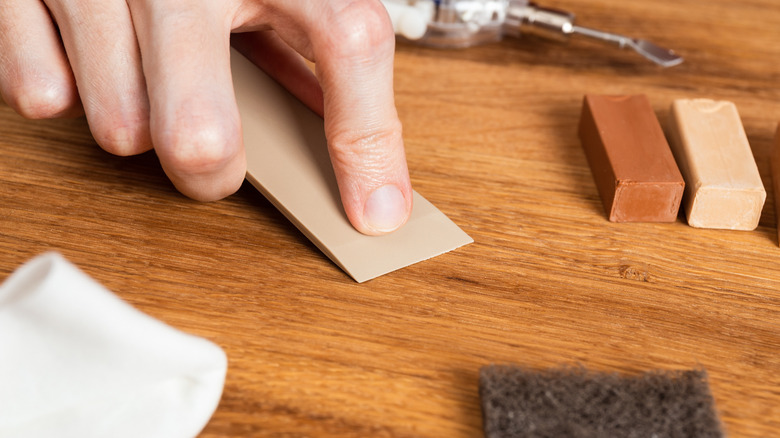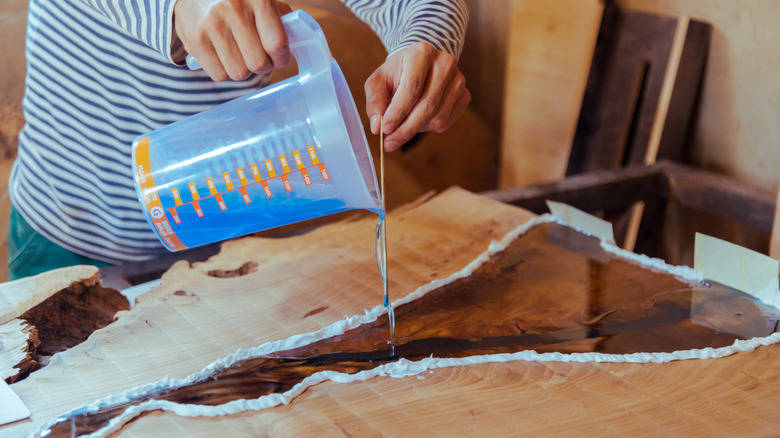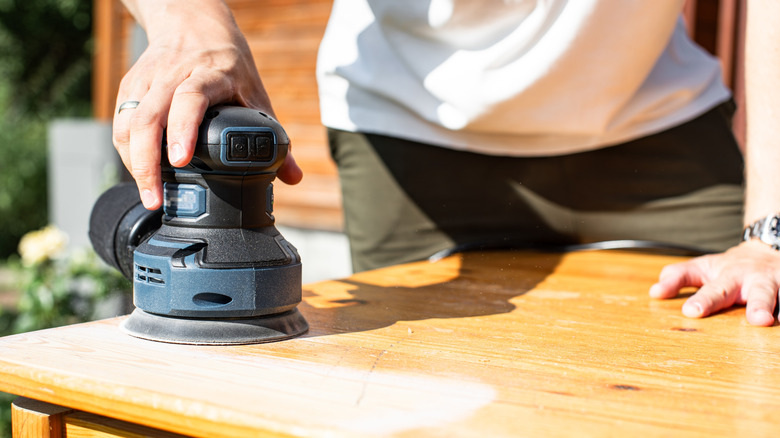Epoxy Wood Filler Vs Bondo: Which Is Right For Your Project
We may receive a commission on purchases made from links.
Carpenters aren't the only people who understand the art of restoring wood; being able to return cracked, broken, or nicked wooden features to their former glory is an important skill for furniture resellers, homeowners, and anyone else who regularly works with the material. Luckily, it doesn't take much effort to make a scratched wooden cabinet smooth again, especially if you have the proper tools worth investing in to start woodworking at home. When it comes to refurbishing or repairing wood surfaces, two popular products artisans reach for are epoxy wood filler and Bondo filler from 3M. These products both have the ability to fill in surface damage and bond broken pieces back together, but which you should reach for will depend greatly on the project you're working on.
Generally speaking, Bondo is best for small, quick jobs that you don't want to spend a lot of time on, such as fusing a chipped piece of wood back to a table or smoothing over nicks on the underside of a cabinet. On the other hand, if you're dealing with serious damage or want to ensure integrity of the wood, go for epoxy wood filler.
Epoxy wood filler is best for tougher jobs
When you buy epoxy wood filler, like this Abatron WoodEpox Kit from Amazon, it'll typically come with two different containers. Each bucket contains a different compound, and when you mix the two compounds together, it forms a workable paste or liquid that will start to harden after twenty minutes or so. The hardened epoxy will be permanently bonded to whatever it's touching, and is extremely durable. This makes epoxy filler ideal for carpentry jobs where strength is key, such as reattaching a corner that has broken off of a shelf. Another pro of epoxy is its smooth, clear appearance, which can be altered to look more like the original wood or used to give worn surfaces a glossy finish.
Epoxy wood filler is certainly a handy addition to any toolkit, but it does have some drawbacks, like how long it takes for the product to completely cure or dry to the point where you can work with it again. Depending how much is used, it can take over a day for epoxy to cure. Epoxy's extreme durability can also make it difficult to work with: it will be harder to sand down edges or cut off uneven sections once the epoxy has cured. Still, epoxy is endlessly helpful for big and small projects that require a reliable fix, so add it to the list of what you will need to refurbish your wood furniture.
Bondo is perfect for quick fixes
3M's Bondo filler was invented by a body shop owner and originally intended for use on cars, but woodworkers soon discovered its bonding properties and started using it for carpentry. While epoxy filler is the best choice for repairs that require structural integrity, Bondo is the product for surface level damage. Bondo cures incredibly fast, and is soft enough to be easily sanded or chiseled afterwards. Plus, thanks to its matte finish, there is the option to paint over the Bondo to make it look more like wood (painting epoxy can lead to streaky, oddly shiny results). Keep in mind that Bondo doesn't work well with wood stain, though. But if an intricately designed desk needs a new corner or old drill holes need to be filled, Bondo is a great option.
As versatile as it is, Bondo is not appropriate for every woodworking project due to the fact that it is not very durable. It can form a strong bond with wood and last a long time, but it won't stand up to environmental conditions like rain.
Bondo and epoxy wood filler are not interchangeable, but they are both worth keeping in your woodworking arsenal. As with any industrial product, be sure to follow the label instructions to use Bondo and epoxy safely, and check out the other woodworking safety precautions you should take before your next project.


